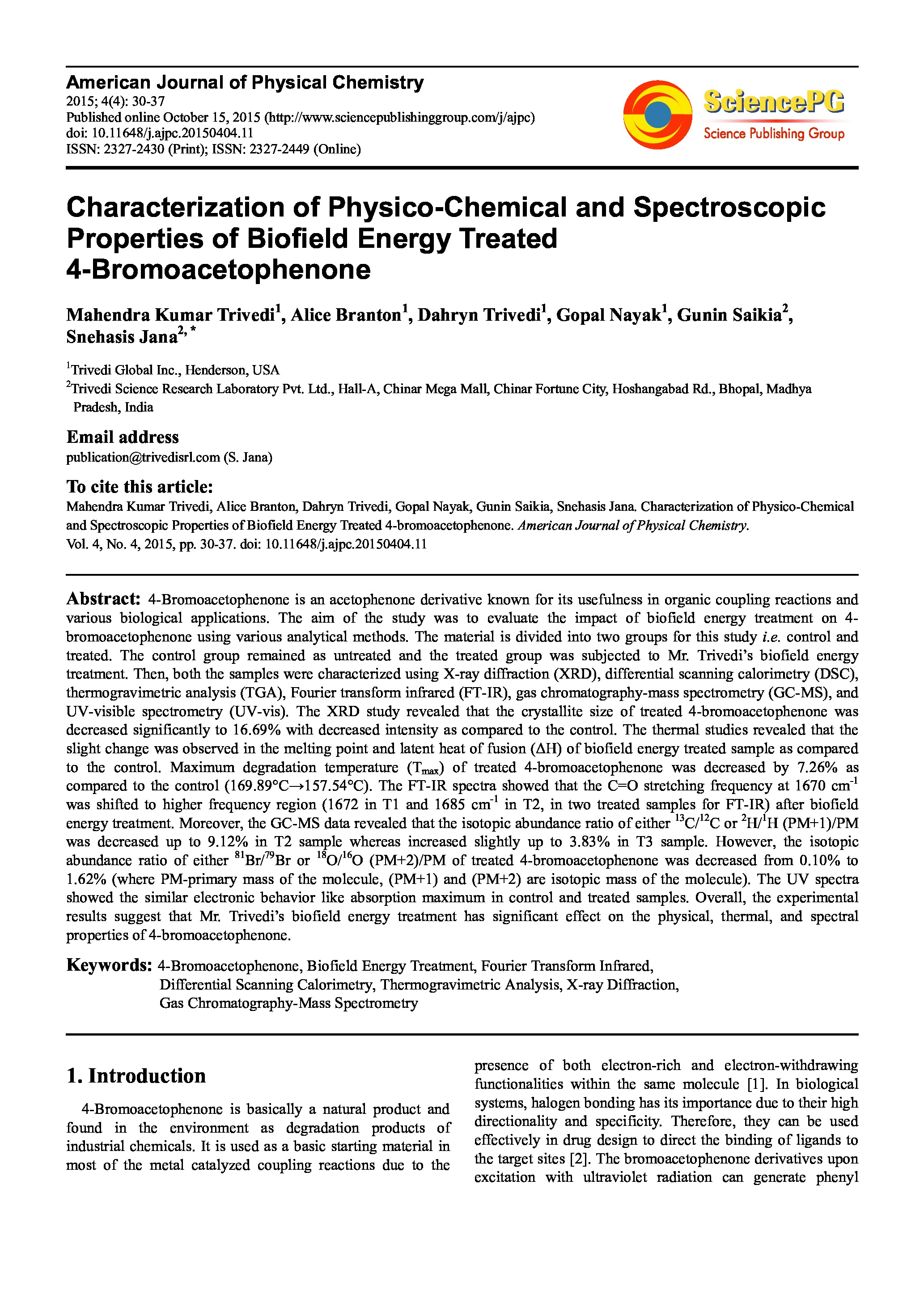Characterization of Physico-Chemical and Spectroscopic Properties of Biofield Energy Treated 4-Bromoacetophenone
Affiliation
Trivedi Global Inc.; Trivedi Science Research Laboratory Pvt. Ltd.
Main category
Natural Sciences (Analytical Chemistry, Method Development (Chemistr)
Abstract
4-Bromoacetophenone is an acetophenone derivative known for its usefulness in organic coupling reactions and various biological applications. The aim of the study was to evaluate the impact of biofield energy treatment on 4-bromoacetophenone using various analytical methods. The material is divided into two groups for this study i.e. control and treated. The control group remained as untreated and the treated group was subjected to Mr. Trivedi’s biofield energy treatment. Then, both the samples were characterized using X-ray diffraction (XRD), differential scanning calorimetry (DSC), thermogravimetric analysis (TGA), Fourier transform infrared (FT-IR), gas chromatography-mass spectrometry (GC-MS), and UV-visible spectrometry (UV-vis). The XRD study revealed that the crystallite size of treated 4-bromoacetophenone was decreased significantly to 16.69% with decreased intensity as compared to the control. The thermal studies revealed that the slight change was observed in the melting point and latent heat of fusion (∆H) of biofield energy treated sample as compared to the control. Maximum degradation temperature (Tmax) of treated 4-bromoacetophenone was decreased by 7.26% as compared to the control (169.89°C→157.54°C). The FT-IR spectra showed that the C=O stretching frequency at 1670 cm-1 was shifted to higher frequency region (1672 in T1 and 1685 cm-1 in T2, in two treated samples for FT-IR) after biofield energy treatment. Moreover, the GC-MS data revealed that the isotopic abundance ratio of either 13C/12C or 2H/1H (PM+1)/PM was decreased up to 9.12% in T2 sample whereas increased slightly up to 3.83% in T3 sample. However, the isotopic abundance ratio of either 81Br/79Br or 18O/16O (PM+2)/PM of treated 4-bromoacetophenone was decreased from 0.10% to 1.62% (where PM-primary mass of the molecule, (PM+1) and (PM+2) are isotopic mass of the molecule). The UV spectra showed the similar electronic behavior like absorption maximum in control and treated samples. Overall, the experimental results suggest that Mr. Trivedi’s biofield energy treatment has significant effect on the physical, thermal, and spectral properties of 4-bromoacetophenone.
DOI
10.18147/smn.2016/paper:373
Do you have problems viewing the pdf-file? Download paper
here
If the paper contains inappropriate content, please
report the paper. You will be redirected to the landing page.
